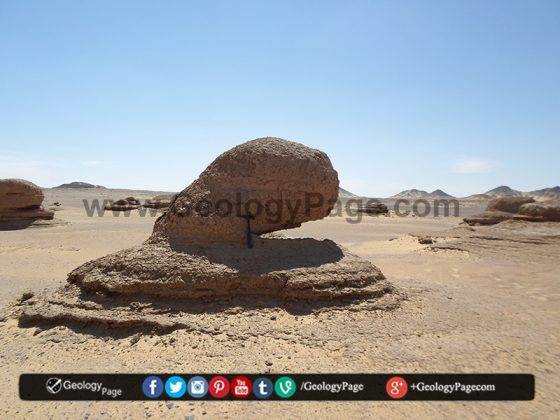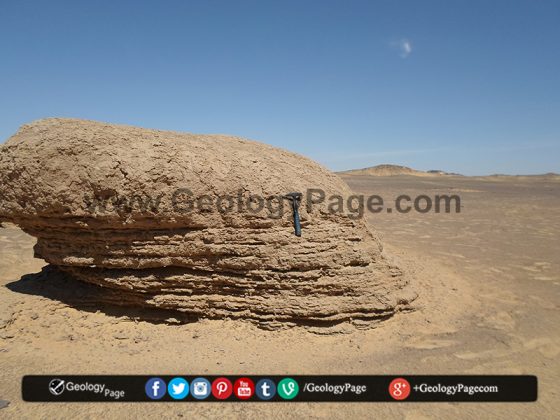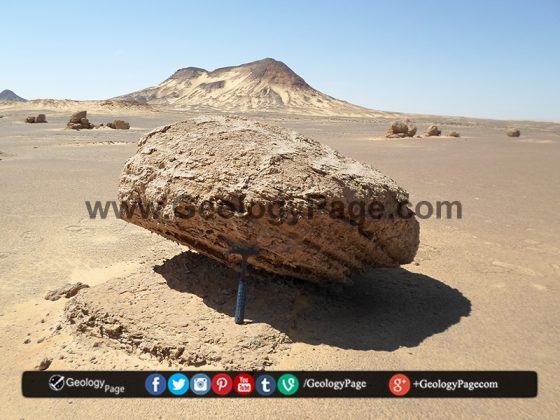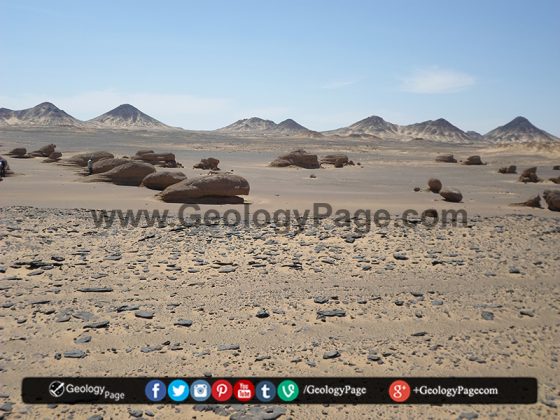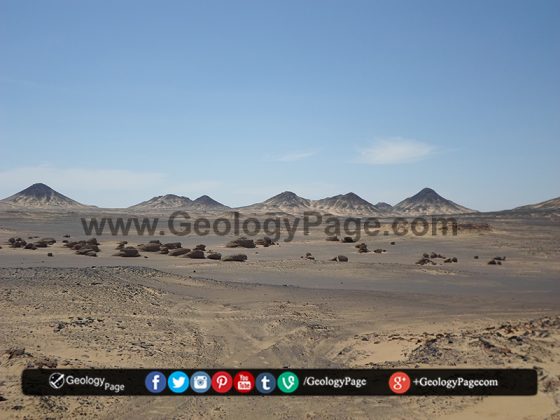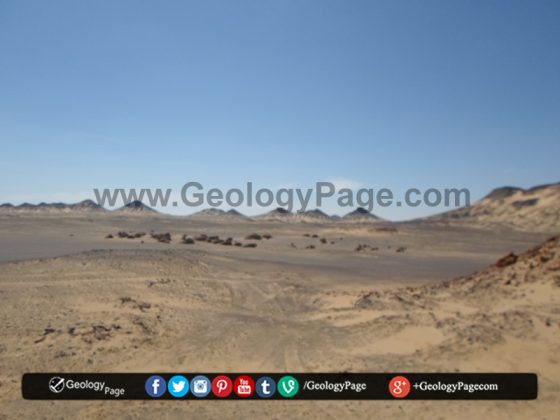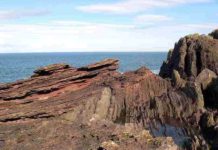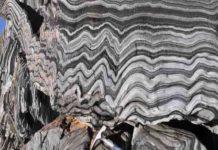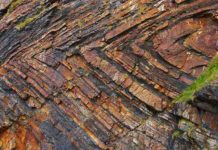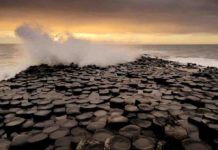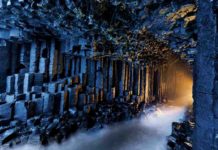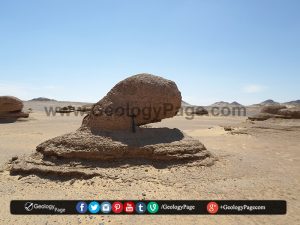
Playa, also called pan, flat, or dry lake, flat-bottom depression found in interior desert basins and adjacent to coasts within arid and semiarid regions, periodically covered by water that slowly filtrates into the ground water system or evaporates into the atmosphere, causing the deposition of salt, sand, and mud along the bottom and around the edges of the depression.
Playas are among the flattest known landforms. Their slopes are generally less than 0.2 metre per kilometre. When filled with only a few centimetres of water, many kilometres of surface may be inundated. It is the process of inundation that develops and maintains the near-perfect flatness so characteristic of these arid-region landforms.
Playas occupy the flat central basins of desert plains. They require interior drainage to a zone where evaporation greatly exceeds inflow. When flooded, a playa lake forms where fine-grained sediment and salts concentrate. Terminology is quite confused for playas because of many local names. A saline playa may be called a salt flat, salt marsh, salada, salar, salt pan, alkali flat, or salina. A salt-free playa may be termed a clay pan, hardpan, dry lake bed, or alkali flat. In Australia and South Africa small playas are generally referred to as pans. The low-relief plains of these lands contrast with the mountainous deserts of North America, resulting in numerous small pans instead of immense playas. The terms takyr, sabkha, and kavir are applied in Central Asia, Saudi Arabia, and Iran, respectively.
Saline flats are specialized forms located adjacent to large bodies of water, as, for example, along coasts, lakeshores, and deltas. They flood during storms, either with surface runoff or with surges from the nearby body of water. The saline crusts of saline flats are quite similar to those that develop in playas.
Physical characteristics
Enclosed basins of salt and clay accumulation may originate from numerous causes. Tectonic causes include faulting, as in the East African Rift Valley and Death Valley, and warping, as in Lake Eyre in Australia, Lake Chad in central Africa, and Shaṭṭ al-Jarīd (Chott Djerid) in Tunisia. Wind deflation can produce shallow basins with downwind dunes, as in southeastern Australia. Even very large basins, such as the Qattara Depression of Egypt, have been ascribed to deflation. Local cataclysmic disruptions of drainage (e.g., volcanism, landslides, and meteorite impacts) may produce playas in desert regions.
Modern playa surfaces are not passive receptors of sediment as they were once believed to be. They serve as important sources of dust and salts, which are blown to the surrounding uplands. Complex assemblages of minerals and sediments occur on the playa surfaces. These directly reflect their environment of deposition and may be used to interpret ancient environmental conditions.
Modern playa surfaces are not passive receptors of sediment as they were once believed to be. They serve as important sources of dust and salts, which are blown to the surrounding uplands. Complex assemblages of minerals and sediments occur on the playa surfaces. These directly reflect their environment of deposition and may be used to interpret ancient environmental conditions.
Two broad classes of playas may be defined on the basis of past histories. One type develops from the desiccation of a former lake. Sediments in such a playa are primarily lacustrine, rather than derived from modern depositional processes. The second type of playa has no paleolacustrine heritage. Small salt pans in South Africa, called vokils, are of this type.
The supply of material, basin depth, and duration of accumulation all contribute to variations in the thickness of playa deposits. Very thick playa sequences may have alternating layers of lacustrine clays and salt beds. The former generally reflect periods of high floodwater runoff into the closed basins, perhaps induced by higher rainfall (so-called pluvial periods). Saline sediments or pure evaporite beds reflect arid climatic phases. The precise climatic interpretation of paleolacustrine playa sequences, however, can be problematic.
Role of flooding and groundwater
Playas affected by occasional surface floods are usually dry. Their surfaces consist of silt and clay deposited by the floodwaters that enter closed basins during the occasional flow events. Salts develop as ponded floodwater in the centre of such a basin gradually evaporates. Water also can be supplied to closed basins by groundwater flow. In basins dominated by groundwater inputs, sediment influxes are minimized, and saline crusts dominate. Moist areas may persist as groundwater flows to the lowest portion of playas. Very large playas may exhibit dry, sediment-dominated sections and moist, salt-dominated sections.
Saline minerals
The salt deposits of a salt pan are zoned like bathtub rings, with less-soluble sulfates and carbonates at the outer margin and highly soluble sodium chloride (table salt) at the centre. The crystallization of these salts can be compared with the evaporation of brine in a dish. The first precipitates from the evaporating brine are calcium carbonate (CaCO3) and magnesium carbonate (MgCO3). These form the outer “bathtub ring.” The next ring consists of sulfates of calcium and sodium (CaSO4 and Na2SO4, respectively). If sufficient calcium is present, gypsum (CaSO4·2H2O) will form. If less calcium is present, thenardite (Na2SO4) and sodium carbonate (Na2CO3) may be deposited. The last remaining brines of exceptionally high salinity precipitate highly soluble chlorides of sodium, calcium, magnesium, and potassium.
Another kind of zoning occurs in saline playas with respect to the hydration of different minerals. Dehydrated minerals, such as anhydrite (CaSO4), occur on surface areas protected against flooding and in wet saline areas.
Some playas also contain exotic minerals. The Death Valley playa is famous for borate minerals, including borax (Na2B4O7·10H2O) and Meyerhofferite (Ca2B6O11·7H2O).
Surface relief and structures
The muds deposited on playas are subject to drying and shrinking. The amount of volume change varies with the clay minerals present. Smectite clays experience the greatest shrinkage on drying. The presence of salts enhances the effect, since deposition and crystallization of salts in the cracks creates a polygonal network of salt wedges.
Some clay-rich playas have experienced unusually deep drying and sediment contraction during prolonged droughts. Giant desiccation polygons formed under these conditions are as large as 90 metres across. Individual cracks more than one metre wide and 15 metres deep have been observed.
Geomorphic evolution
Impact of climatic change
Playas are exceptionally sensitive to environmental change. They have been most profoundly influenced by changes in hydrologic regimen induced by the climatic variations of the Quaternary Period (i.e., the past 2.6 million years). All have experienced episodes of expanded lake levels in the past. Such predecessors are often called pluvial lakes, thereby implying periods of increased rainfall. It is also possible, however, that lakes could have expanded because of other factors, including increased groundwater inflow and/or decreased evaporation/transpiration.
Paleolake chronologies
Pluvial lakes in the southwestern United States, including Lake Lahontan in western Nevada and the lakes of eastern California draining to Death Valley, seem to have achieved their most recent high levels between 14,000 and 11,000 years ago. The period from 30,000 to 24,000 years ago was marked by low lake levels. Another low was reached about 7,000 years ago. Many of the lakes of the southwestern United States, however, seem to have been not quite in phase with one another.
Effects of wind action
Playas and saline flats are particularly susceptible to wind action. Clays and salts form crusts that curl and flake upon drying. The flakes and curls are readily deflated, and these wind-eroded sediments are then deposited leeward of the playas and saline flats from which they were removed. This process is increasingly recognized as a source of dust hazard, as studies around Owens Lake, California, and in western China have shown.
In Australia many playas have large transverse crescentic foredunes on their leeward side. Because of their silt and clay composition, these features are sometimes called clay dunes. In Australia they are known as lunettes. James M. Bowler, an Australian Quaternary stratigrapher, produced a precise chronology of playa development and associated eolian activity in the desert of western New South Wales, Australia. There, numerous small lakes reached their maximum extent 32,000 years ago, approximately coincident with the age of the first human remains in Australia. From about 26,000 years ago, the lakes fell to low levels. Playas formed roughly 16,000 years ago at a time when eolian activity peaked. High lakes again occurred about 9,000 to 5,000 years ago, but playas were reestablished after that.
The present association of playas, lunettes, and linear dunes in the Australian deserts may imply a causative association. C.R. Twidale proposed that the linear dunes developed as lee-side accumulations of sand trapped by the growth of lunettes. Climatic change is critical to the association.
Photo :
Note : The above story is reprinted from materials provided by Victor R. Baker ” Regents Professor of Geosciences and of Planetary Sciences; University of Arizona”
Image Credit : © GeologyPage.com


